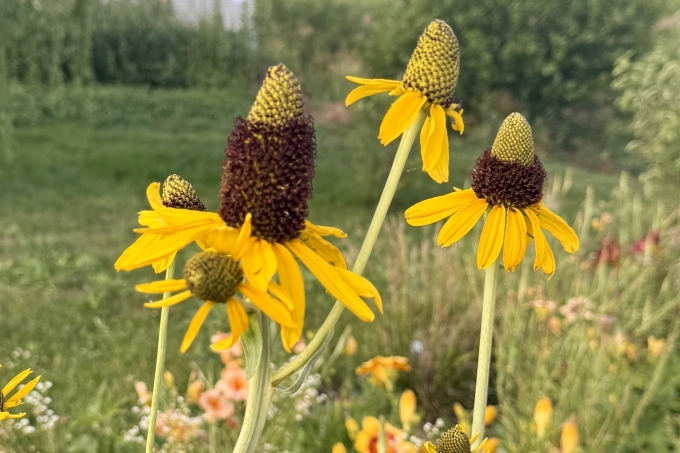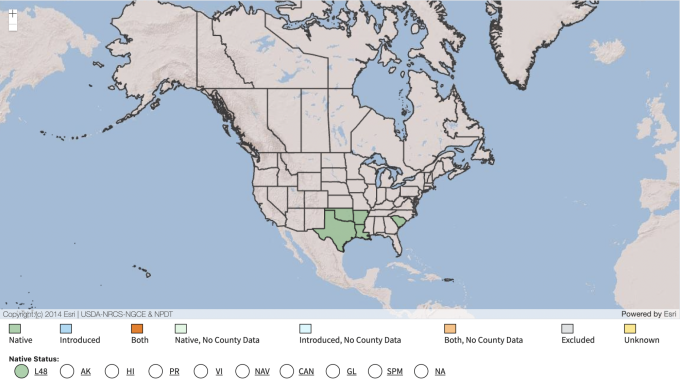Common Name: Great Coneflower
Family: Asteraceae
Plant Type: Herbaceous Perennial
Native Range: South-central United States (Texas, Louisiana, Oklahoma); adaptable beyond native range
Hardiness Zones: 4–9
Height: 4.0 to 7.0 feet (flowering stalks)
Spread: 2.0 to 3.0 feet
Bloom Time: Early to mid-summer (June to July in Nebraska)
Bloom Description: Tall stems with large, daisy-like yellow petals and prominent dark brown central cones
Sun Exposure: Full sun
Water Needs: Medium
Soil Preference: Moist, well-drained soils preferred; tolerates average clay and sandy loam
Management Level: Low to medium
Suggested Use: Back of borders, native meadows, rain gardens, prairie plantings
Attracts: Butterflies, native bees, birds (especially goldfinches)
Tolerates: Heat, clay soils, deer
Notable Features: Huge blue-green basal foliage, dramatic flower stalks, ornamental seed heads
Nebraska Growing Notes:
Great Coneflower is a bold and architectural native perennial that adapts well to Nebraska’s climate, particularly in moist to average soils and full sun. Though native to the southern U.S., it performs reliably in eastern and southeastern Nebraska, especially with some supplemental water during extended dry periods.
Its large blue-gray basal leaves offer a striking foliage contrast in the garden, while towering flower stalks create vertical drama in June and July. The large central cones remain attractive into fall and provide seed for songbirds, especially goldfinches.
In windy areas or exposed sites, staking may be needed to prevent flopping. Deadheading can prolong bloom, but many gardeners leave seed heads for visual interest and wildlife value.
Landscape Use:
Perfect for prairie-style gardens, rain gardens, large perennial beds, and wildlife-friendly landscapes. A showstopper at the back of borders or used as a seasonal vertical accent. Pairs beautifully with grasses like Panicum virgatum, Liatris, Echinacea, and Monarda.
Caution:
Non-toxic and wildlife-friendly. May need occasional division every few years to maintain vigor. Flower stalks can reach heights of 6–7 feet—plant with room to grow and consider wind protection in open sites.
Garden Locations:
Bed(s) 1, 2, 4, 11 (Planted in our gardens summer of 2025)
Sources:
https://plants.usda.gov/plant-profile/RUMA3
https://www.missouribotanicalgarden.org/PlantFinder/PlantFinderDetails.aspx?kempercode=c864


